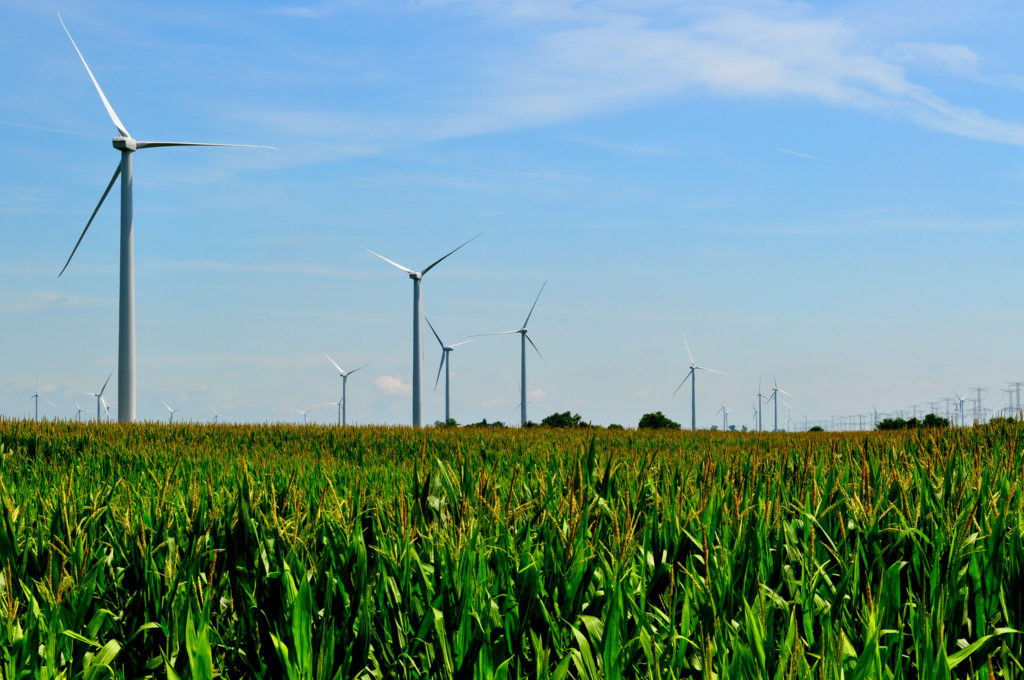
Farmers in many places have found additional sources of income by allowing wind turbines to be built on their land. One example is the Amazon Wind Farm, which is a massive project of over 100 turbines near Elizabeth City, North Carolina. The 494-foot tall turbine towers scattered over 34 square miles are rising up above farms that grow corn, wheat and soybeans. It is the first utility-scale wind farm in the Southeast.
Installations like these are not without their detractors and opponents. Some people don’t like seeing the skyscraper-tall turbines in their environment and there are various worries about aircraft safety, wildlife, noise and so on.
One topic that recently was looked at in detail is the effect that wind turbines might have on crops growing beneath and around them. A multi-year study at Iowa State University sought to determine how the turbulence created when wind moves through wind turbines affects conditions at ground level where crops grow.
They installed monitoring equipment on research towers at a 200-turbine wind farm in Iowa and collected data for 3 years on wind speeds and directions, temperature, humidity, turbulence, gas content and precipitation.
The data show that wind turbines have a measureable impact on several key variables that affect growing conditions. By mixing air at different elevations, they affect temperatures, cooling during the day and warming at night. The turbulence suppresses dew formation and enriches carbon dioxide content in surrounding crops.
The result of the study was that on balance, wind turbines appear to have a small, positive impact on crops. It is hard to tell if these effects are substantial but in any case, farmers planting wind turbines in their fields do not appear to be harming their other crops.
**********
Web Links
Wind turbines may have beneficial effects for crops, research suggests
Photo, posted July 12, 2010, courtesy of Tom via Flickr.
‘Wind Farms and Ordinary Farms’ from Earth Wise is a production of WAMC Northeast Public Radio.